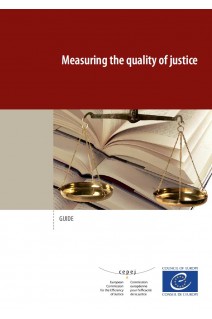



The concept of quality measurement applied to justice is the subject of a lively debate in Europe. The different positions cannot be summarised because the concept of quality has been based, until today, on a general approach as to what is meant by good justice. There is the fear that the issue would be solved too swiftly by defining a few indicators focused on specific aspects of the judicial system, which would be partial and misleading.
INTRODUCTION
A REFERENCE MODEL
MEASURING THE QUALITY OF PROCESSES AND DECISIONS
MEASURING THE PERFORMANCE OF THE JUDICIAL SERVICES
CUSTOMER SATISFACTION SURVEYS
CONCLUDING REMARKS
APPENDICES

The concept of quality measurement applied to justice is the subject of a lively debate in Europe. The different positions cannot be summarised because the concept of quality has been based, until today, on a general approach as to what is meant by good justice. There is the fear that the issue would be solved too swiftly by defining a few indicators focused on specific aspects of the judicial system, which would be partial and misleading.
